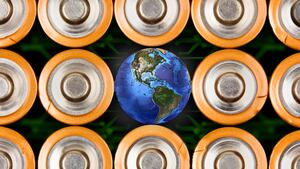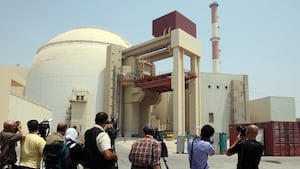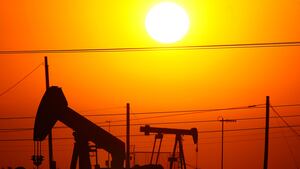It’s been nearly seven decades since the first nuclear power plant opened in Obninsk, Russia, but nuclear power remains as controversial as it’s ever been—even for people who think that stopping climate change from ravaging the planet means we must turn to alternative sources of energy beyond fossil fuels. Michael Mann, a professor of atmospheric science at Penn State, told The Daily Beast that there’s a tribalist element to the debate, where many who are loudly pro-nuclear seem to want to dissociate themselves from “leftist environmentalists” who may be more prone to supporting options like wind and solar power. This “hippie-punching,” as he describes it, is often more about identity than finding solutions.
“I think people tend to get on a team and root for the team. I see irrational exuberance from some of my nuclear colleagues, but I also see it with renewables,” Todd Allen, a professor of engineering and chair of the Nuclear and Radiology Department at the University of Michigan, told The Daily Beast. “I just think that’s human nature. I don’t think it’s helpful.”
This wouldn’t be an issue if we could just all agree that solar and wind will save the world, but there are some concerns with putting all our eggs in these few baskets. Sometimes the sun isn’t shining and the wind isn’t blowing. That’s called the “intermittency problem,” and it could potentially leave people stranded without power for hours or even days at a time if there’s no backup energy to taper things over. One solution to this is using grid-scale batteries to store the excess electricity wind or solar generate when conditions are ideal so it can be distributed when conditions are less than ideal. However, we’re still working on improving battery technology to make sure we can accommodate energy needs for long durations if needed, so that’ll take some time.
Nuclear power could solve the intermittency problem. In fact, it can be used to meet a constant energy demand—in theory, we could use it to power everything, all the time, without any severe limits.
But the flipside of nuclear power’s potential is its history. The 2011 Fukushima Daiichi meltdown resulted in the evacuation of roughly 150,000 people and radiation spreading all the way to California. Chernobyl was 36 years ago, and we’re still living with the aftermath on human health and the environment. And skeptics often raise concerns around dealing with the radioactive waste nuclear reactors produce.
Still, most experts counter that modern reactors are safe (Fukushima and Chernobyl were commissioned in the 1970s), and specially designed to make sure there’s little chance of a meltdown when they’re properly operated. As for the waste, Allen thinks that’s an often overstated issue. “Nuclear doesn’t make a lot of waste,” he said. “The problem is the waste it does make has to be treated very carefully.”
In fact, the bigger obstacle to nuclear power may not be safety—but time and money. Ongoing nuclear power projects in the U.S. have been moving at a snail’s pace. Two reactors that have been under construction at Plant Vogtle in Georgia since 2013 have cost billions of dollars more than expected and still aren’t completed. The first reactor could be completed within roughly a year, though that’s barring another round of delays.
“We’ve gotten horrible at building [nuclear power plants],” Allen said. “The plants we’re building in Georgia right now are way over time and over budget.”
When it comes to the future of nuclear energy, one kind of nuclear reactor that’s gotten a lot of attention in recent years is called a small modular nuclear reactor (SMR). As the name suggests, these reactors are designed to be a fraction of the size of traditional nuclear reactors—as much as 90 percent smaller. They will have fewer mechanical parts than a traditional reactor, operate on less radioactive material, produce less heat, and could operate underground with passive cooling systems.
All of those attributes don’t just make them easier and cheaper to build, they also enable SMRs to be safer than regular nuclear power plants—at least in theory. The idea of a Chernobyl-size disaster happening with an SMR is essentially physically impossible. SMRs could, in effect, assuage many of the safety concerns skeptics voice about nuclear power.
The hype has been big enough that even a wealthy figure like Bill Gates jumped on the SMR train, founding nuclear reactor company TerraPower back in 2006. The company is currently constructing an SMR facility in Wyoming that could boast an output of 500 megawatts.
Oregon-based NuScale Power became the first company in the U.S. to get safety approval from the Nuclear Regulatory Commission (NRC) for its SMR design in 2020. NuScale plans to have its first reactors in full operation by 2030. The reactors will produce 720 megawatts of electricity in Idaho Falls, Idaho. The company believes that the plant could eventually power hundreds of thousands of homes in the region.
Though there’s a lot of excitement surrounding SMRs, it remains an unproven technology. Allison Macfarlane, former chair of the U.S. Nuclear Regulatory Commission, told The Daily Beast it could take a “long time” for this technology to develop.
“Building a first-of-its-kind reactor is a real challenge,” Macfarlane told The Daily Beast. “If you’re looking at the next 10 years, you’re not going to see a lot of new nuclear. Especially not these new designs.”
Allen echoed these sentiments. “I think we’re going to start seeing demos within the next decade,” Allen said. “When will any of them get broad commercial deployment? We’ll see.”
Indeed, NuScale’s project has already shown that there are challenges ahead. The company’s first project has already seen costs balloon to over $6 billion—well beyond what was initially projected.
But while SMRs might be off to a rocky start, Daniel Kammen, an energy professor at the University of California, Berkeley, told The Daily Beast there may be one reason to be optimistic that we’ll be able to roll out the technology quickly after this initial hump.
“Technologically,” he said, “we know that these reactors work,” since they’re more or less scaled-down versions of generation 3 reactors—which are the kind of traditional reactor we build today. “These SMRs are scaled-down versions of things people know how to build and work.”
Though the potential seems huge for finally converting nonbelievers into nuclear power acolytes, companies like NuScale will still have to demonstrate that SMRs are a safe, reliable, cost-effective source of power. Kammen said we won’t have answers to these questions until one has been built.
That could be a crippling obstacle for unleashing the potential of nuclear power in combating climate change. The Biden administration has set a goal to get the U.S. to run on 100 percent clean electricity by 2035. It’s hard to see SMRs or nuclear power at large playing a large role in that kind of future at that point. But the urgency of climate change means we’ve no choice but to plow forward as best we can.
“What I think is that we need to decarbonize immediately. We should have decarbonized yesterday,” Macfarlane said. “We need to do that as fast as possible and whatever gets us there as quickly as possible is the right technology.”









